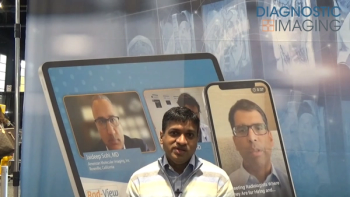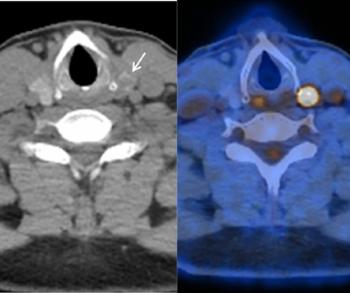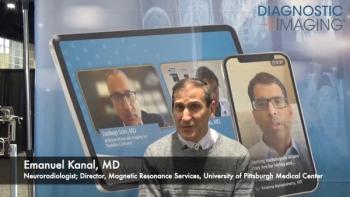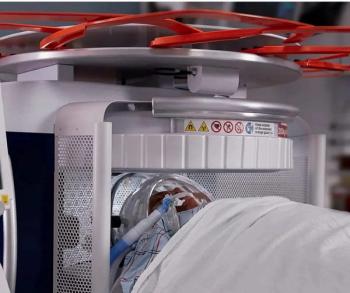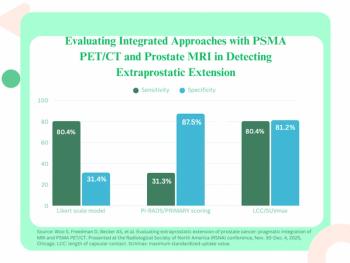
COVID-19 Vaccine-Related Adenopathies Lingering Longer Than Anticipated
Initial guidance advised these adenopathies would resolve within six weeks. Research and clinical experience shows it’s taking much longer.
COVID-19 vaccine-related adenopathies are lingering and showing up longer on scans than providers initially thought.
At the advent of the Pfizer-BioNTech and Moderna vaccine administrations, initial reports of adenopathies emerged around findings seen on screening mammograms that could be mistaken for breast malignancies. But, other research has also identified these swollen lymph nodes on other scans in other patient populations.
From the outset, guidance advised radiologists and patients that these adenopathies should self-resolve within four-to-six weeks. However, in a new research letter published April 27 in
Related Content:
“This study shows that avid axillary lymph node uptake on FDG PET/CT can be detected in more than a quarter of our patient population even beyond six weeks after the second dose of the mRNA-based COVID-19 vaccination,” said the team led by Yael Eshet, M.D., MSc, a diagnostic radiology specialist at Chaim Sheba Medical Center. “Compared to a previous study showing normalization of FDG uptake within 40 days of receiving an inactivated H1N1 influenza vaccine, we found uptake persistence even at 70 days.”
In a retrospective analysis, the team evaluated FDG PET/CT scans of 169 patients – average age 65 – who had received their second Pfizer-BioNTech vaccine at least 42 days prior. Three board-certified radiologists and a nuclear medicine resident measured bilateral axillary lymph node uptake.
Based on their analysis, the interpreters determined 29 percent of patients had positive axillary uptake seven-to-10 weeks after their second vaccination dose. Specifically, 42 percent, 31 percent, 25 percent, and 19 percent had these findings at week 7, week 8, week 9, and week 10, respectively, the team said.
And, these lingering findings are also being seen with breast imaging. Stamatia Destounis, M.D., FACR, a radiologist at Elizabeth Wende Breast Care in Rochester, New York, confirmed she is seeing the same findings in screening mammography in her practice.
“Now, it can be several weeks later after both vaccines are completed that we are still seeing quite large lymph nodes,” she said. “We’re seeing them on both sides, and it can take up to 12 weeks for these lymph nodes to go down in some patients.”
Destounis was part of the Society of Breast Imaging’s Patient-Centered Care Committee that drafted the early guidelines about these adenopathies, and she stressed that every patient will respond differently to the vaccine based upon their own immune system. Consequently, there has been no shift in advice on how radiologists should handle these findings when they appear on mammograms.
“Everyone is being conservative. No one is rushing to biopsy any of the patients,” she said. “Some patients are coming in or are complaining about pain, and if they’ve recently had the vaccine, we counsel them, even over the phone, to give it more time to see if the discomfort goes away.”
Related Content:
If a patient is particularly scared or nervous, she and her colleagues will have the patient come in for an ultrasound exam. Otherwise, she said, they review the patient’s history, confirm COVID-19 vaccination history, examine any prior studies, and send them back to their primary care doctor for initial management and follow-up.
Most importantly, she said, discuss the findings with the patient and put these adenopathies in the proper context.
“Communicate with your patients – explain that this is a normal and that their immune system is just reacting to the vaccine,” she said. “Let them know that even if you notice swollen lymph nodes on their screening mammogram, they may or may not feel them. Everyone is a little different with different body shapes.”
For more coverage based on industry expert insights and research, subscribe to the Diagnostic Imaging e-Newsletter
Newsletter
Stay at the forefront of radiology with the Diagnostic Imaging newsletter, delivering the latest news, clinical insights, and imaging advancements for today’s radiologists.

